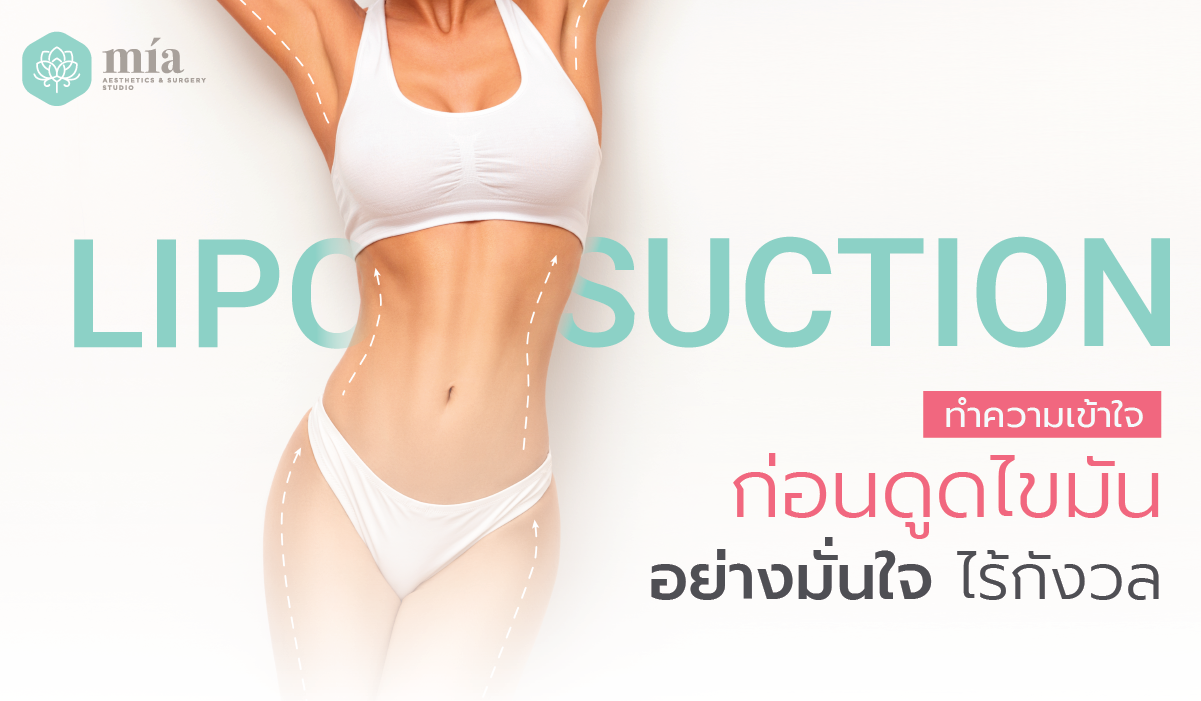Have you heard in-depth details about liposuction?
Believing that before making a decision about liposuction, everyone must educate themselves and gather relevant knowledge is crucial. This means that studying liposuction requires acquiring accurate and reliable information to make well-informed decisions.
What is liposuction?
Liposuction is a surgical procedure aimed at precisely removing excess fat deposits in specific areas such as the abdomen, arms, thighs, waist, or chin. It's considered a shortcut to achieve a slimmer body safely and effectively. While liposuction reduces proportions and reshapes the body, it's not a weight loss procedure as commonly misunderstood. Nowadays, liposuction carries minimal risks and dangers when performed by certified surgeons in accredited facilities with sterile operating rooms and continuous medical supervision, especially for procedures involving anesthesia. It's crucial not to overlook the importance of safety and quality standards when considering liposuction, as opting for cheap procedures doesn't guarantee safety or desired results.
Price of liposuction.
Currently, there are many liposuction clinics available, and the prices vary greatly from low to high. Many people believe that price is one of the primary factors to consider when making decisions (as it's common for people to prefer cheaper options). However, how can one be sure that liposuction at a lower price is as good as expected? Mia Clinic is here to address concerns regarding the price of liposuction and what factors contribute to it.
Factors that contribute to variations in liposuction prices among different institutions.
1. Liposuction Machines:
There are various liposuction machines available, ranging from manual methods used by physicians, water-assisted techniques, ultrasound-assisted liposuction (UAL), power-assisted liposuction (PAL), and radiofrequency-assisted liposuction (RFAL). Each machine has its own advantages, disadvantages, potential side effects, and varying outcomes.
2. Physicians / Surgeons:
Surgeons performing liposuction must have specialized experience and knowledge in each case. They should understand how to perform liposuction in different body proportions and utilize effective techniques to achieve the highest possible efficiency and satisfactory results for patients. However, having good liposuction techniques may vary among individual physicians. Moreover, surgeons specializing in liposuction typically have more expertise than those who perform various procedures.
3. Operating Room:
The operating room or facility used for liposuction must meet standard and sterile conditions according to international standards to prevent the risk of infection and ensure patient safety. While internationally accredited operating rooms exist in leading hospitals, not all facilities may have them. Therefore, it's essential to research and ensure that the operating room of the liposuction clinic meets international standards.
4. Anesthesia by Anesthesiologists:
For patients undergoing liposuction in multiple areas or concerned about discomfort, anesthesia administered by anesthesiologists is recommended to alleviate concerns about pain during the procedure. This ensures that patients undergoing liposuction, particularly in sensitive areas like the arms, can be comfortable and pain-free throughout the process.
Methods of performing liposuction
Conventional Liposuction, also known as Manual Liposuction, involves using only the force of the physician's hands. The physician inserts a needle into the layer of fat beneath the skin and uses manual force to break up the fat before suctioning it out with a syringe.
This method of liposuction, relying on manual force, can cause damage to surrounding tissues, blood vessels, and nerves, leading to significant pain and swelling for the patient during and after the procedure.
Suction-Assisted Liposuction (SAL) evolved from the idea of maximizing fat removal while minimizing procedure time and patient discomfort. This technique employs a standard tube attached to a vacuum device, often accompanied by the injection of a solution containing medications to minimize pain and bruising.
Laser Diode Liposuction, or Laser-Assisted Liposuction, utilizes laser energy to help tighten the skin post-fat removal. The laser generates heat energy, typically ranging from 40 to 60 degrees Celsius, aiding in skin tightening. However, this method may require longer treatment times and may yield slower results with less fat removal but higher safety.
Water Jet Assisted Liposuction represents the latest and most gentle technology for fat removal. It employs the gentle power of water energy to remove fat without damaging surrounding tissues. This innovative approach, exemplified by the Body-jet system, utilizes water pressure combined with medications to shrink blood vessels, allowing for gentle dislodging of fat cells for efficient and safe removal. The extracted fat remains viable, making it suitable for transfer to other areas of the body for enhancement.

